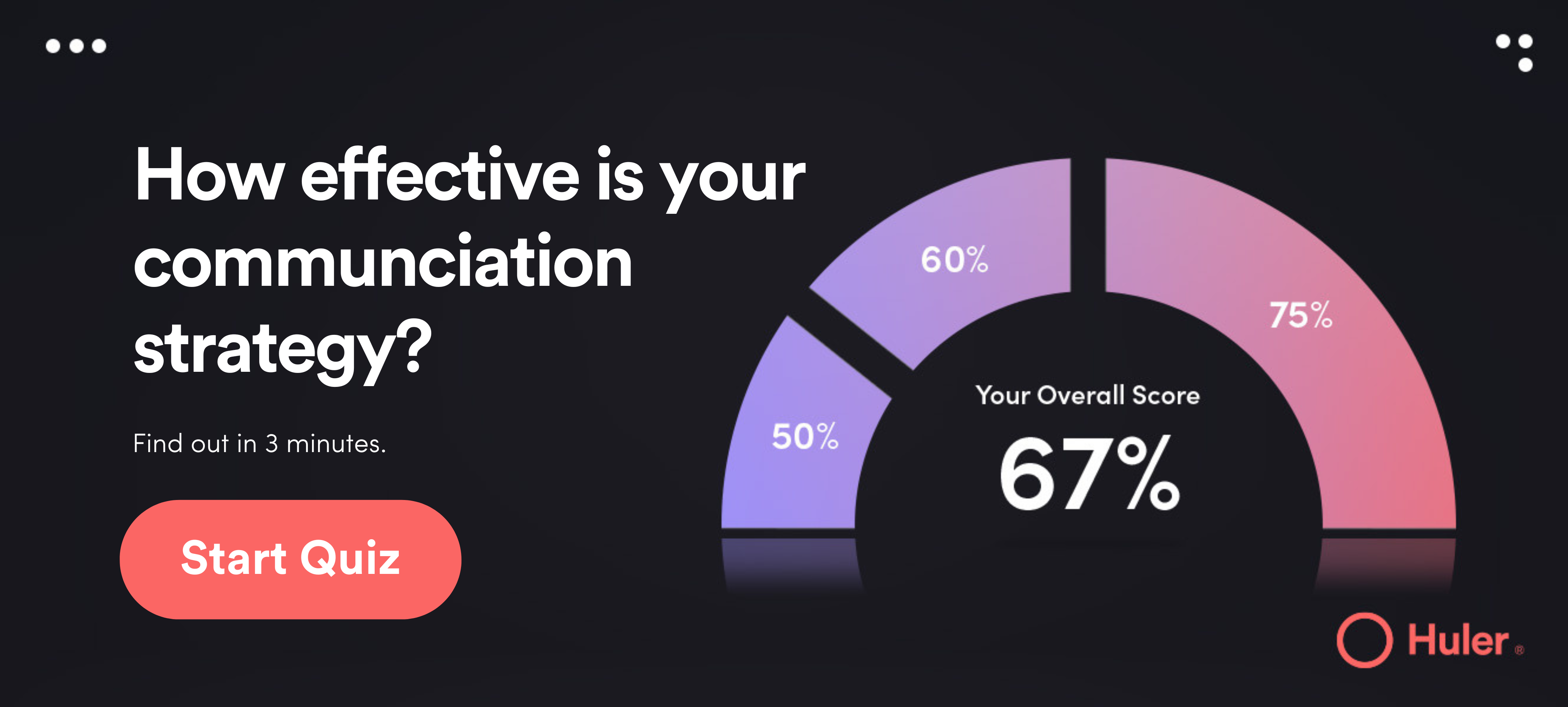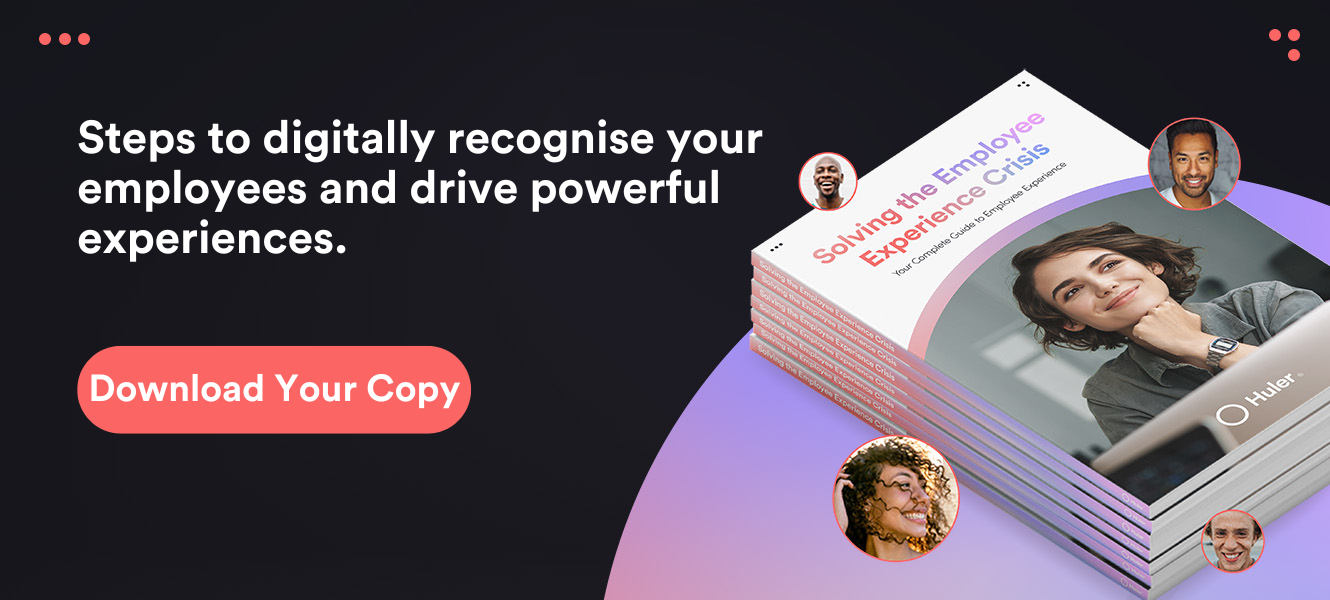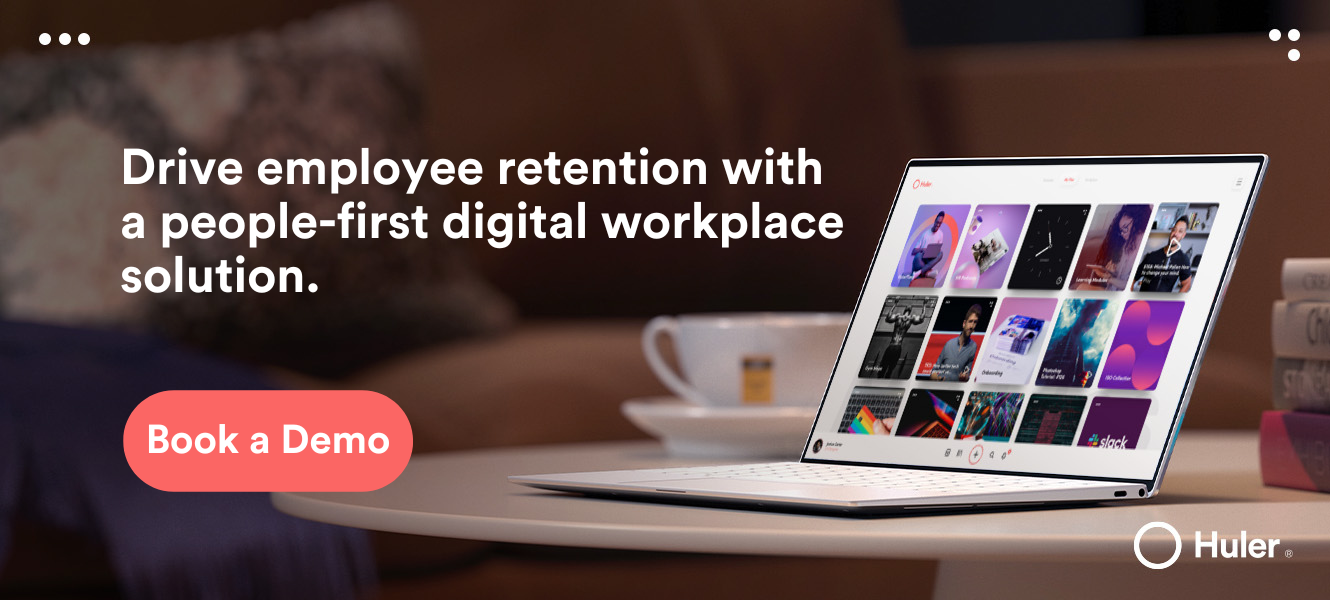Employee retention isn’t what it used to be. Resignation rates are at an all-time high, with employees leaving jobs in droves, so much so that this phenomenon was dubbed ‘The Great Resignation’.¹ But employers need to be proactive in their retention strategies; 77% of the reasons why employees quit are preventable.²
In this context, HR leaders should now, more than ever, be vigilant about their talent leaving. They need to understand why employees leave, and recognise that keeping employees at their company goes beyond just offering a good salary and benefits — they need to drive employee and job satisfaction.
In this blog, we’ll look at 8 HR-approved, effective employee retention strategies that will see your employees thrive with your organisation.
Why does employee retention matter?
For one, employees are expensive to replace. It costs around £3,000 just to hire a new employee,³ without taking into account recruiter cost for specialist positions. And that’s not even taking into account the indirect costs of losing employees, such as:
- Loss of experience
- Loss of productivity
- Employees that are too thinly stretched
- Low product or service quality
When employees leave, it can cause a downward spiral for those left behind:
- It affects employee engagement: It’s often dispiriting to see colleagues leave — it can make the workplace feel less stable and less enjoyable.
- It puts a strain on those who remain: When workloads increase, employees feel like they are being asked to do more with less resources.
- It can lead to burnout for those left behind: When employees resign, those left behind often find themselves with increased responsibilities, which means longer working hours. And burnout leads to turnover.
Some turnover is inevitable, as people change jobs from time to time. But high turnover isn’t. By following HR-approved strategies for retention, you can not only help retain employees — you might even help attract new ones too.
Internal communication
74% of employees feel like they’re missing out on company news because internal communication is lacking or, worse, non-existent.⁴ Employees who spend hours looking for information can easily feel frustrated. This can also result in missed deadlines. Taken together, this can easily push people from your company.
There’s nothing worse than feeling like you’re stuck in a communications black hole at work. So what strategies can you implement to make sure your internal communications are strong and your employees are on the same page?
- Get a system in place: Make sure that you have a clear system in place for collating and distributing essential information. This can be a digital workplace that includes a clear notification system or even — if you have to — email. Once it’s in place, it’s important to ensure everyone knows how to use it.
- Encourage employee participation: Motivate employees to ask questions when they’re not sure about something — it’s better to clarify things up front than to let misunderstandings fester. Encourage employees to share information and ideas freely.
- Involve decision-makers: Make sure that decision-makers are accessible and willing to listen to feedback.
Effective and proactive internal communication can foster a supportive and inclusive environment where all employees feel valued. With the right digital tools and software, you can improve internal communication, build trust, and ensure that your employees feel informed and engaged. Before long, you’ll enjoy the benefits of improved employee retention.
Bridge the physical and digital gap
Remote and hybrid employees are equally important, though remote employees may not always feel this way. Without the right culture, remote employees can feel disconnected from their colleagues — and might even miss out on important information for their work.
The numbers confirm this. 19% of remote workers see isolation as their biggest problem in the workplace, while 70% tend to feel left out.⁵ To bridge this gap, forward-thinking HR leaders may make use of an Employee Experience Platform (EXP), ensuring that employees work smarter and everyone’s on the same page.
An EXP is a central hub that unites all the tools and information people use and need to communicate, collaborate and connect — from the onboarding process to training. An EXP sits on top of your existing systems, bringing all your tools into one unified hub, making everything:
- Easy to find and navigate: Notifications can be sent out by admins to everyone, with no more lost emails.
- Great for sharing knowledge: Create and share information about projects, making sure everyone is up to speed and working together.
- Accessible: From anywhere and on any device, so wherever people are they can stay up to date.
An EXP creates a consistent, intuitive and unified employee experience between employees whether they’re working from home, the office — or wherever they want.
Focus on managers
Often, people don’t quit jobs; they quit managers. As much as 57% of employees quit because of a manager, while an additional 32% are considering leaving because of their manager.⁶
Managers should have clear lines of communication with their employees. This can be done by:
- Open-door policy: An open-door policy shows your employees that you support them, and creates a people-first work culture, encouraging employees to stay with the company that values them.
- Check-ins: This is an instance where no news is not good news. Making sure you check in with employees on projects and tasks is important to make sure they’re on task, motivated and recognised.
- One-to-ones: Whereas check-ins can be quicker and more informal, it’s important to also speak directly with employees for longer talks. This is important for performance feedback, but also to understand an employee’s wellbeing outside of task related chat.
- Clear and concise communication: When managers communicate their expectations clearly and concisely, there’s little room for confusion and misunderstanding.
Managers can provide resources, set expectations, advocate for their teams and regularly and transparently communicate with them. When they do this well, it can have a huge impact on the overall employee experience, boosting employee retention rates. As a result, employees can work more effectively and efficiently, and will often feel more valued and appreciated.
Recognise employees
When it comes to employee recognition, making it easy is key. If you make it easy for employees to give and receive feedback consistently, they’re more likely to do it. Integrating employee recognition features into your digital workplace makes sharing success stories and celebrating wins even easier.
Employees in the office and those working hybrid or remotely can give and receive feedback through the same process, allowing everyone to get involved in the company culture.
Managers who make a point of recognising their employees’ efforts will increase employee confidence and engagement. In fact, 50% of employees believe that being recognised or thanked by their managers improved their relationship and built trust.⁷ Recognising employees is one of the simplest and easiest ways to improve employee retention — it’s the ultimate win-win.
Professional development
It’s no secret that people want to improve, progress, and upskill in their jobs. Creating pathways for professional development, upskilling and growth will result in engaged and dedicated employees, and help you retain top talent.
With the move to remote and hybrid working, learning and development had to move online too. But for learning and development to be truly effective, it can’t just be slapped online, often on outdated intranets without clear signposts for where employees can find resources.
To be valuable and accessible to your employees, learning and development must be incorporated into a modern EXP:
- Accessibility: Upskilling and professional development opportunities should be presented in appealing ways and should be accessible to all employees.
- Knowledge share: When integrated with an EXP, employees can easily share learning and development modules.
- Customisation: L&D can be targeted to specific employees using customisation features, personalising the training provided directly to those employees.
- Collations: Training, learning and development modules and information can be collated and shared through collections — these can be admin-made or created by employees who want to share information.
Promoting wellbeing
When employees are stressed, burnt out, or overwhelmed, it can lead to all sorts of problems, from decreased productivity to absenteeism. So what can you do to support your employees’ well-being?
- When employees are stressed, burnt out, or overwhelmed, it can lead to all sorts of problems, from decreased productivity to absenteeism. So what can you do to support your employees’ well-being?
- Wellbeing days and workplace wellness programmes: Well-being days and workplace wellness programmes can help to improve employee productivity and reduce absenteeism. They can also help to foster a sense of community and camaraderie amongst employees, while promoting healthy work-life integration.
- Feedback and recognition programs: Feedback and recognition are key to promoting employee wellbeing. Letting employees know what they’re doing well and recognising their achievements will show them that you value their work. Even small gestures can make a big difference in promoting employee well-being.
- Using wellbeing apps: There are a number of great employee wellbeing apps, and each one offers something unique. For example, some apps focus on helping employees track their fitness goals, while others help them manage their stress levels. These apps can be integrated with notifications sent with modern intranet alternatives like an EXP.
Being a good employer is more than just providing a decent salary. When considering that 87% of employees look at their prospective employer’s health and wellness benefits before accepting a job, supporting your employees’ well-being and understanding that they have a life outside of work is vital to employee retention.⁸
Work-life integration
We all know the saying, “All work and no play makes Jack a dull boy”, and it’s true! Making sure your work doesn’t take over your life is crucial. That’s why work-life integration is so important to modern businesses. Whereas work-life balance aims to keep work and life separate in balance, work-life integration recognises that in a modern, hybrid working world, an employee’s life and work coexists in a flexible, fluid approach.
Good work-life integration is essential to employees’ happiness and productivity. To get it right, HR leaders should aim to build a people-first culture. To do this, employers should:
- the business. If they feel supported, it’ll improve their employee experience, and they’ll be more likely to stay long-term.
- Listen to and understand employee needs: When you understand what your employees need to ensure work-life integration, you can create a productive and employee-driven digital workplace. The result? Employees who feel connected, productive and part of the team.
- Right to disconnect: Encouraging employees being disconnected from work when they’re out of hours shows how the company cares. This can mean encouraging staff to put on automatic email replies and status updates to show they’re not contactable during certain hours.
Overworked employees aren’t happy employees. They’re less effective at their jobs, which may ultimately lead to them resigning. Ensuring employees have flexibility and wellness embedded in all parts of their lives will help them strike a healthy work-life integration, improving your employee retention rates.
Employee compensation
In today’s competitive marketplace, compensation is essential to any company’s retention strategy. Especially when you consider that 55% of employees value fair compensation more than any other workplace benefit.⁹
To get this right, employers should:
- To get this right, employers should:
- Be upfront and transparent about pay structure.
- Regularly reassess and benchmark compensation against competitors.
- Offer financial incentives, paid time off, ample parental leave and opportunities for career advancement.
The Best HR Strategies for Employee Retention
Retention is no longer just about a good salary and a nice corner office. Employees want to be engaged, recognised and valued. They also want their voices heard and to feel part of the team. For HR leaders, it’s about keeping employees happy so that you can keep them in the company. Keeping your finger on the pulse of your employee turnover rate can help you avoid unwanted costs and barriers to success.
HulerHub is an employee experience platform built to transform your digital workplace. It offers a central and intuitive hub where employees can get everything they need to be fully effective in their jobs.
Using HulerHub, you can provide a consistent work experience across your physical and digital workplaces, allowing your employees to feel like they belong in your working community, regardless of where they work.
Book a free demo today to see how HulerHub can help you improve your employee retention strategy.
¹ Are We Really Facing a Resignation Crisis?
² 2019 Retention Report: Trends, Reasons & A Call to Action.
³ How to Calculate Cost-Per-Hire [Infographic] – Glassdoor for Employers
⁴ 21 Scary Internal Communication Stats For 2021 & Beyond.
⁵ 25 Trending Remote Work Statistics [2022]: Facts, Trends, And Projections.
⁶ New DDI Research: 57 Percent of Employees Quit Because of Their Boss.
⁷ 10 Employee Recognition Stats You Can’t Ignore.
⁸ 22 Telling Employee Wellness Statistics [2022]: How Many Companies Have Wellness Programs.
⁹ Employee Happiness: What Do Employees Value Most in Their Job?







